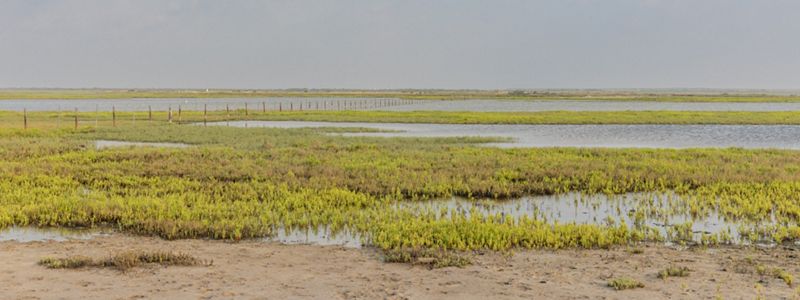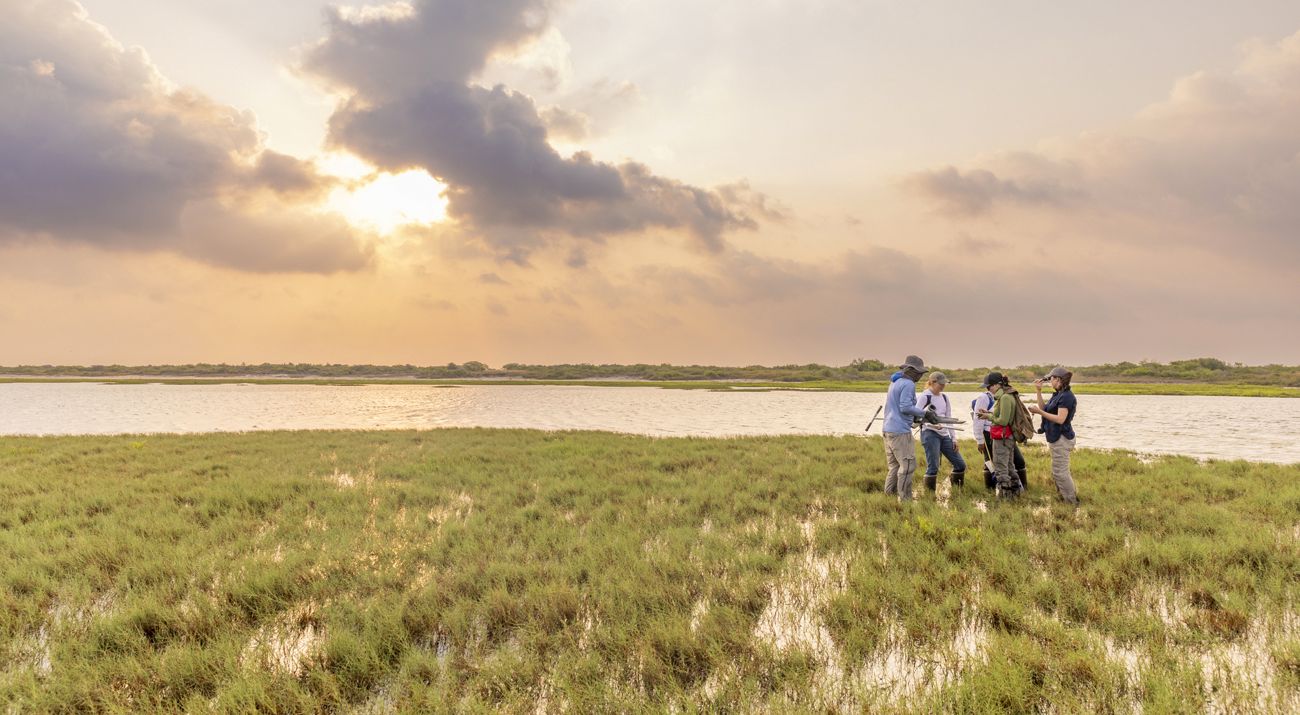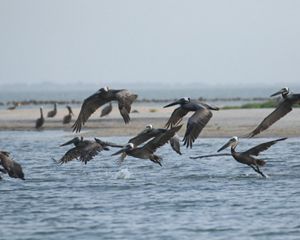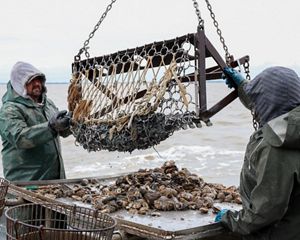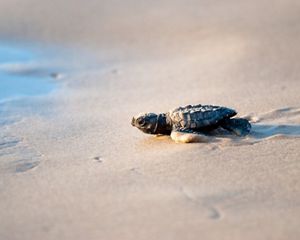Can Blue Carbon Be a Climate Solution in Texas?
Why protecting and restoring wetlands can slow climate change and protect vulnerable coastlines.
The Lone Star State may be better known for rocky mesas and arid grasslands, but Texas’ coastal wetlands could be an untapped solution to climate change. A wetland ecosystem can store five times as much carbon as a rainforest of the same size. Undisturbed, that carbon can remain locked in the soil for thousands of years. Meanwhile, marshes, mangroves and other wetland habitats protect coastal communities from sea level rise and damaging storms. All along Texas’ ~3,355 miles (~5,400 kilometers) of shoreline, coastal wetlands exist as both an asset and an opportunity.
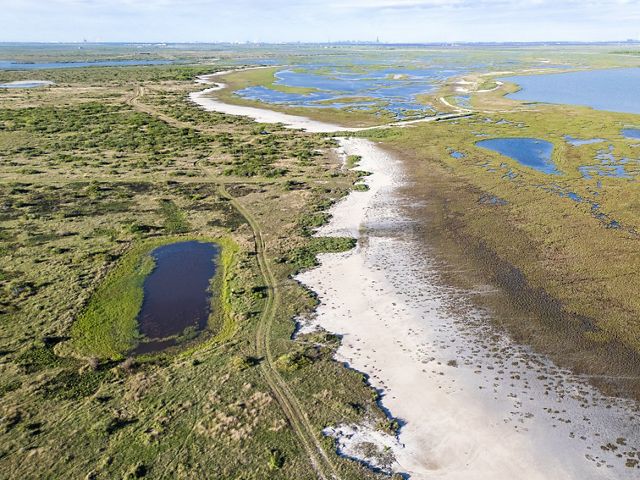
Yet development pressure threatens the long-term health of those ecosystems—and the stability of the stored carbon. To address that threat, scientists with The Nature Conservancy in Texas are using innovative methods to map coastal wetlands and assess their potential for carbon storage. It’s one of a growing number of “blue carbon” projects that TNC is undertaking around the world. Establishing a market for blue carbon could support conservation and restoration efforts on public and private lands, while safeguarding biodiversity, slowing climate change and protecting coastal communities from the impacts of a warming world.
Coastal Wetlands Do It All
In the 1950s, Texas’ coastal wetlands covered some 4 million acres (1.6 million hectares)—a diverse mix of seagrass beds, salt and freshwater marshes and stands of shrubby mangroves. By the early 1990s, nearly two-thirds of that historic coverage had been lost to development, overgrazing and oil and gas exploration. Today, climate change is putting new pressure on coastal wetlands by increasing the rate of sea-level rise and changing rainfall patterns and the inflow of freshwater into the system.
Those vulnerable habitats provide multiple benefits for people and nature. Wetlands provide critical habitat for wildlife including birds such as the brown pelican and endangered whooping cranes. They also act as nurseries for commercially and recreationally important marine species, including red drum and brown shrimp.
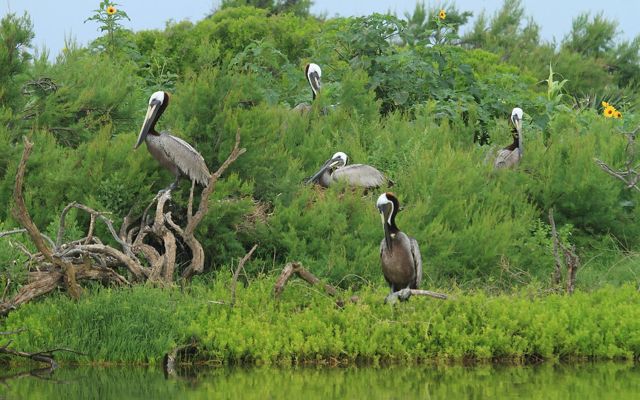
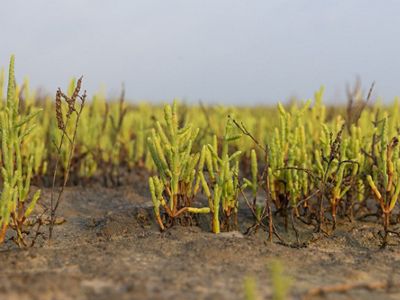
Wetlands also act as a buffer between land and sea, protecting coastal communities from flooding and damaging storm surges. As climate change increases the sea level and alters weather patterns, wetland habitats are an important solution for boosting coastal resilience.
At the same time, these ecosystems help to protect against climate change by soaking up and storing carbon. TNC is assessing how much carbon Texas’ wetlands can store and under what conditions. The work is the first step toward the development of a blue carbon project along the Texas coast.
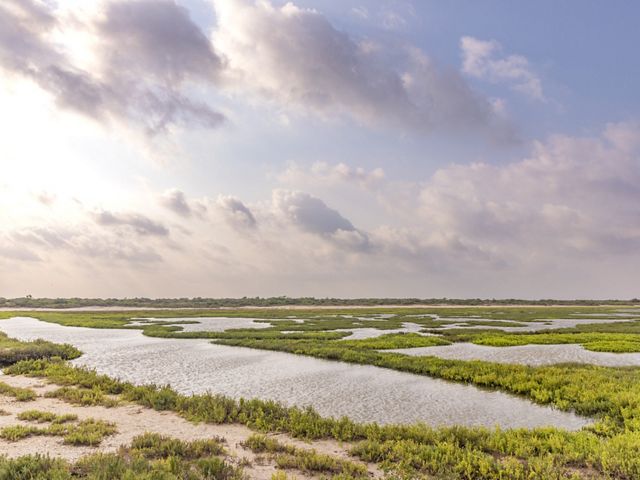
Exploring Blue Carbon in Texas
TNC is involved in various stages of blue carbon market projects in places such as Virginia (U.S.), the Bahamas, New Zealand and Australia. It’s also an intriguing possibility in Texas, which produces 13% of U.S. carbon emissions—the highest percentage in the country. As a first step in Texas, we’re mapping areas where wetlands currently exist, as well as where they might migrate in the future as a result of climate change and sea level rise.
We’re also tackling a range of demonstration projects in an effort to quantify the carbon benefits of different conservation and restoration initiatives. With the support of the COmON Foundation, the Knobloch Family Foundation and the USDA Natural Resources Conservation Service, TNC acquired a conservation easement on the Port Bay Ranch in 2024, protecting 1,202 acres of coastal wetlands and prairie near Rockport, Texas. The property encompasses 1.7 miles of bay shoreline, including nursery habitat for fish and shellfish and stopover habitat for waterfowl, migratory songbirds and occasional whooping cranes.
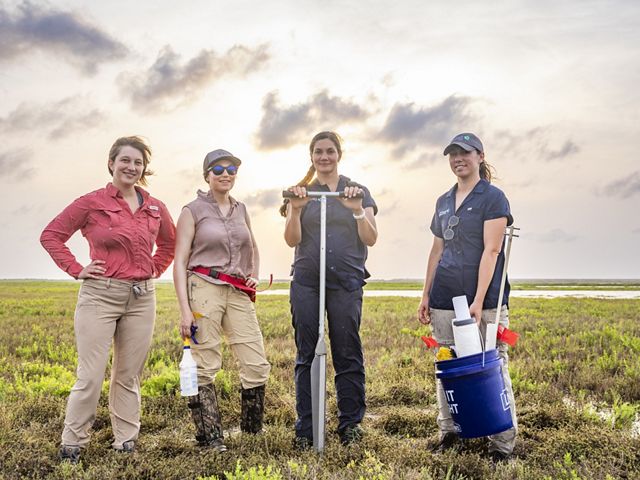
This site is serving as a living laboratory where we are collecting data and measuring the carbon benefits of different restoration strategies, such as various erosion control methods, hydrological restoration or the use of dredged material to stabilize shorelines and restore wetlands.
As TNC looks to expand this work, we're collaborating with property owners, restoration practitioners and land and resource managers to identify and secure additional sites for blue carbon. Establishing blue carbon in Texas could help landowners secure funds to protect and manage their wetland properties into the future. We’re also teaming up with communities and local partners to raise awareness of the value of coastal wetlands for people and nature. These habitats support the growth and survival of hundreds of species, including scores of shorebirds and commercially important fish and shellfish species—such as blue crab, redfish and flounder—that are critical to the Gulf economy.
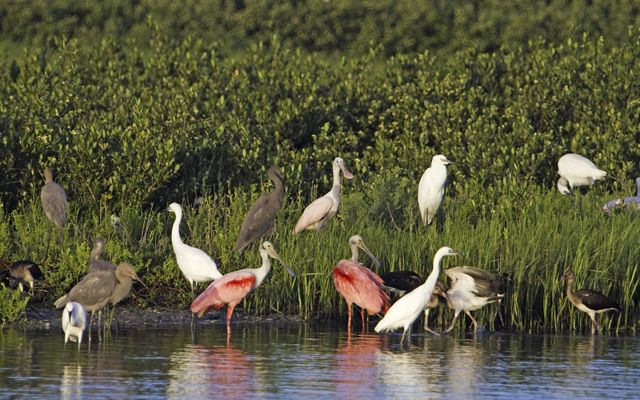
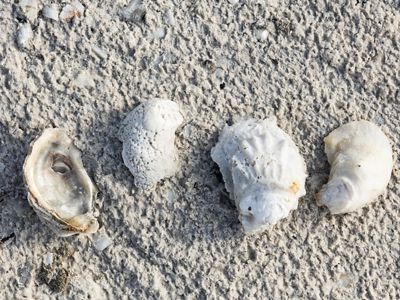
With solid science and hard data in hand, we will develop an action plan to evaluate the potential for blue carbon initiatives on the Texas Gulf Coast. By finding innovative ways to protect our coastal wetlands, we can defend biodiversity, stabilize the climate and safeguard coastal communities from the increasing hazards of climate change.
Learn More about Blue Carbon in Texas
-
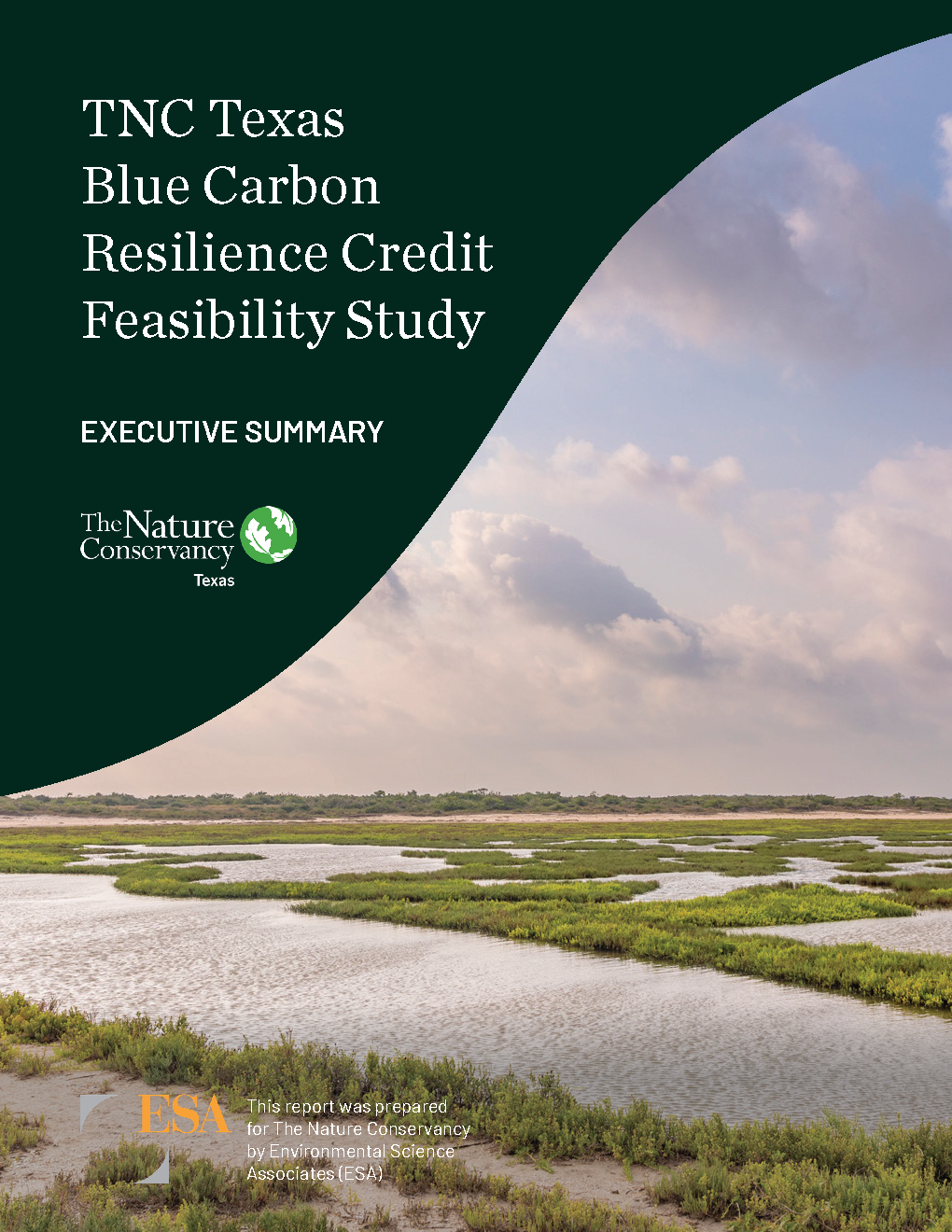 TNC Texas Blue Carbon Resilience Credit Feasibility Study
TNC Texas Blue Carbon Resilience Credit Feasibility StudyThis study seeks to contribute to the body of knowledge around blue carbon and assess feasibility for developing market projects in Texas.
DOWNLOAD
We Can’t Save Nature Without You
Sign up to receive monthly conservation news and updates from Texas. Get a preview of Texas' Nature News email.
